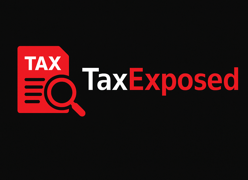Avoid India’s March Tax Panic: Smart 80C Tips
Don’t let the March 31st deadline lead to poor 80C choices. Learn to pick suitable options over hasty insurance for real savings.
Picture this: It’s mid-March in India. Your WhatsApp is buzzing with ‘urgent’ policy offers from persistent agents. Your colleagues are suddenly financial gurus, whispering about Section 80C like it’s the key to a hidden treasure. And you? You might be frantically wondering if that last-minute insurance policy will shield your hard-earned salary from a hefty tax bite.
Welcome to India’s annual tax-panic season, a time when perfectly rational people rush to buy random financial products, especially insurance, like they’re the last discounted items at a clearance sale. This isn’t just a funny observation; it’s a widespread issue with significant financial implications. Let’s explore what fuels this March madness and how you can navigate tax season without the last-minute frenzy and potential regrets.
The Annual March Scramble: Understanding the Tax-Saving Deadline Dash
Every year, as March rolls around, a peculiar phenomenon sweeps across India. The primary catalyst? The looming financial year-end on March 31st. This is the cut-off date to make specified investments and expenditures if you want to claim certain deductions on your income tax for the current financial year.
The problem is, many of us either forget or aren’t fully aware of the nuances until our employer’s HR department sends out those ‘gentle reminders’ that feel more like an urgent countdown: “Please submit your tax-saving proofs by [mid-March date] or anticipate higher TDS (Tax Deducted at Source).” Cue the widespread panic. Suddenly, that ₹1.5 lakh limit under Section 80C of the Income Tax Act feels less like an opportunity and more like an urgent target to hit.
The Allure of the Quick Fix: Insurance as the Default Choice
In this frenzied environment, what’s often perceived as the easiest, most accessible ‘solution’ to plug the tax-saving gap? You guessed it – insurance policies. “I bought three insurance policies last March,” confesses Rahul S., a 32-year-old IT professional from Bengaluru. “Did I need them? Probably not. Did I understand them? Definitely not. But my advisor said I needed deductions, and I panicked.” This sentiment is echoed across the country.
The logic, or rather the rushed thought process, often goes something like this:
- Need tax-saving proof? Check.
- Insurance premiums qualify under Section 80C? Check.
- Buy policy, send receipt to HR, problem solved? Not quite.
This haste often leads individuals to acquire:
- Life insurance policies that don’t align with their actual protection needs.
- Unit-Linked Insurance Plans (ULIPs) with complex structures and potentially high charges, chosen without understanding the long-term commitment.
- Endowment plans promising modest returns that might not even outpace inflation.
Many of these snap decisions don’t align with genuine financial goals—unless the goal is to lock up funds in products that might not be the best fit for twenty years or more.
Key Insight: The Insurance Industry’s Timing
It’s no coincidence that marketing efforts for tax-saving insurance products intensify significantly in the last quarter of the financial year (January-March). Many “limited time offers” and “special March schemes” are designed to leverage this period of heightened tax awareness and anxiety.
Section 80C: A Commonly Misunderstood Deduction
Let’s delve into Section 80C. Under this provision, you can claim deductions up to ₹1.5 lakh per financial year for a variety of investments and payments. These include, but are not limited to:
- Employee Provident Fund (EPF) and Voluntary Provident Fund (VPF) contributions
- Public Provident Fund (PPF) deposits
- Life insurance premium payments
- Equity-Linked Savings Schemes (ELSS) mutual funds
- Principal repayment on home loans
- Children’s tuition fees (for up to two children)
- 5-year tax-saving fixed deposits with banks or post offices
- Sukanya Samriddhi Yojana (SSY) for a girl child
Now, here’s a crucial point many overlook: You might already be utilizing a significant portion, or even all, of your ₹1.5 lakh limit through contributions like EPF (often deducted directly from your salary) and home loan principal repayments. However, because these are sometimes “out of sight, out of mind,” many assume they have a large gap to fill and rush to buy a new insurance plan without first assessing their existing contributions.
Reality Check: Are You Double Dipping Unnecessarily?
Before making any new Section 80C investment, tally up your existing contributions: EPF, PPF, children’s tuition fees, home loan principal. You might be surprised to find your ₹1.5 lakh limit is already close to being met!
The True Cost of Last-Minute Financial Decisions
Tax-saving instruments are intended to help you reduce your tax liability and, ideally, build wealth. However, when you hastily purchase unsuitable insurance policies primarily for tax benefits, you might be doing the opposite. You could be locking your money into products with potentially low returns, high charges, and long commitment periods.
Some traditional insurance plans offer returns that barely keep pace with inflation, meaning the real value of your money could erode over time. Others might impose significant charges if you decide to discontinue the policy prematurely. Purchasing tax-saving insurance in a March panic can sometimes feel like paying extra for a service you didn’t fully evaluate or truly need.
Breaking the Cycle: A Smarter Approach to Tax Planning (Even in March)
It’s never too late to adopt a more thoughtful approach. Here’s how to avoid the annual cycle of panic-buying:
1. Start Early, Plan Methodically
Ideally, tax planning should begin at the start of the financial year, in April, not in the eleventh hour. Dedicate some time early on to:
- Estimate your expected taxable income for the year.
- Review the deductions you are already claiming (like EPF, home loan principal).
- Identify any shortfall in your Section 80C limit.
Integrate your tax-saving strategy into your overall financial plan throughout the year, rather than cramming it into the busy days of March.
Estimate Your Tax with the Official Calculator
2. Prioritize Suitable Instruments: ELSS, PPF, and Term Insurance
When considering options for Section 80C, think beyond just filling the gap. Consider instruments that align with your risk appetite and financial goals:
- ELSS Funds: These are equity-linked mutual funds with a 3-year lock-in period, offering the potential for market-linked returns along with tax benefits. They do carry market risks.
- PPF: A long-term option with a 15-year lock-in, offering tax-exempt interest and capital protection.
- Term Life Insurance: If your primary goal is life cover, a pure term insurance plan offers high coverage at a relatively low premium. The premiums paid are eligible for Section 80C benefits. This separates insurance (for protection) from investment.
You don’t necessarily need complex “saving-cum-insurance” products if simpler, more transparent options better serve your needs.
3. Ask the Critical Question: Need vs. Tax Benefit
Whenever an insurance policy is proposed to you, especially in March, ask yourself this simple question:
“Would I consider buying this product in April or May if it offered no tax benefit?”
If the answer is no, it’s a strong indicator that the product might not be the right fit for your actual financial needs, beyond the immediate tax-saving consideration.
The Long-Term Impact of Hasty Choices
Consider this: you hastily buy an endowment plan with an annual premium of ₹20,000 in March. If you continue this for 10 years, you’ve paid ₹2,00,000. If the plan offers a modest return, say around 4-5%, the maturity amount might not be as substantial as you’d hope. In contrast, an ELSS, even with average market performance over the same period, could potentially offer significantly higher returns, albeit with associated market risks. This isn’t insignificant; it’s potential wealth foregone, year after year, by well-intentioned taxpayers caught in the March rush.

Key Takeaways to Remember
- Don’t wait until March: Begin your tax planning at the start of the financial year (April).
- Assess First: Understand if you’ve already maximized your Section 80C limit through existing contributions before considering new investments.
- Think Long-Term: Choose financial products based on your long-term goals. Pure insurance is for protection; investments are for wealth creation. Don’t confuse the two solely for tax benefits.
- Prefer Clarity: Consider ELSS, PPF, and pure term plans for their respective benefits before opting for complex bundled products.
- Red Flag Rule: If an investment requires last-minute convincing or creates a sense of urgency, it’s probably worth stepping back and re-evaluating.
Final Thoughts: Tax Planning is Not a Quick Fix
While we Indians are known for our ingenuity and ability to find quick solutions (‘jugaad’), tax planning is one area where hasty decisions can be counterproductive. Instead of rewarding product providers with your panic-driven purchases, reward yourself with informed, intentional financial planning. You have a full twelve months to plan your taxes; don’t compress this crucial financial activity into the last twelve days of the financial year.
Frequently Asked Questions (FAQs)
Do life insurance premiums qualify for tax deduction?
Yes, premiums paid for life insurance policies are eligible for deduction under Section 80C of the Income Tax Act, up to the overall limit of ₹1.5 lakh. However, the tax benefit alone should not be the sole reason for purchasing a policy; it should primarily meet your insurance needs.
Can I claim 80C deductions if I invest in March?
Yes. As long as you make the qualifying investment or payment on or before March 31st of the financial year, it can be claimed as a deduction for that year. The key is to make informed choices, even if it’s late in the year, rather than buying something unsuitable in a hurry.
Are ELSS funds generally a better option than traditional insurance products for tax saving under 80C?
For individuals with a moderate to high-risk appetite and a longer investment horizon, ELSS funds often offer the potential for better long-term, market-linked returns compared to traditional insurance-cum-investment plans. ELSS also has a shorter lock-in period of 3 years. However, ELSS investments are subject to market risks, while traditional plans might offer guaranteed, albeit often lower, returns. The “better” option depends on your individual financial goals, risk tolerance, and existing portfolio.
What is the typical deadline for submitting tax-saving proof to my employer?
Most companies set an internal deadline for submitting investment proofs, usually around mid-January to mid-March. This allows them to calculate and deduct the correct TDS from your salary for the remaining months of the financial year. However, you can still make tax-saving investments until March 31st and claim the deduction when filing your Income Tax Return (ITR), even if you missed your employer’s deadline.
Useful Resources:
- Income Tax Department of India – Official Portal: https://www.incometax.gov.in/
- Section 80C Deductions Overview: Income Tax India – Section 80C PDF
- Investor Education by SEBI: https://investor.sebi.gov.in/
Disclaimer: The information provided in this blog post is for general informational purposes only and does not constitute financial or tax advice. All readers are strongly advised to consult with a qualified financial advisor or chartered accountant before making any financial or investment decisions. Tax laws are subject to change, and the applicability of deductions may vary based on individual circumstances.

